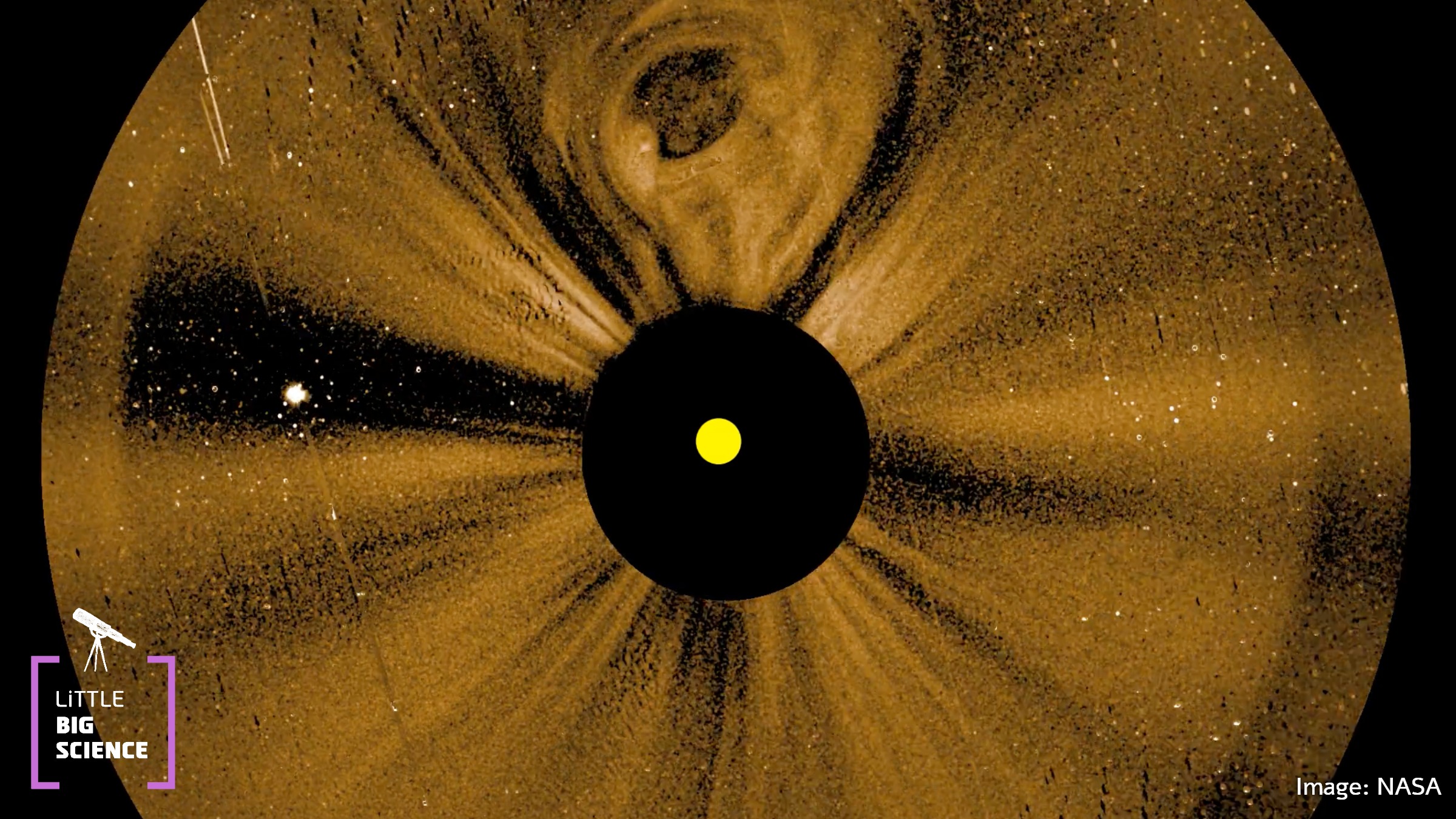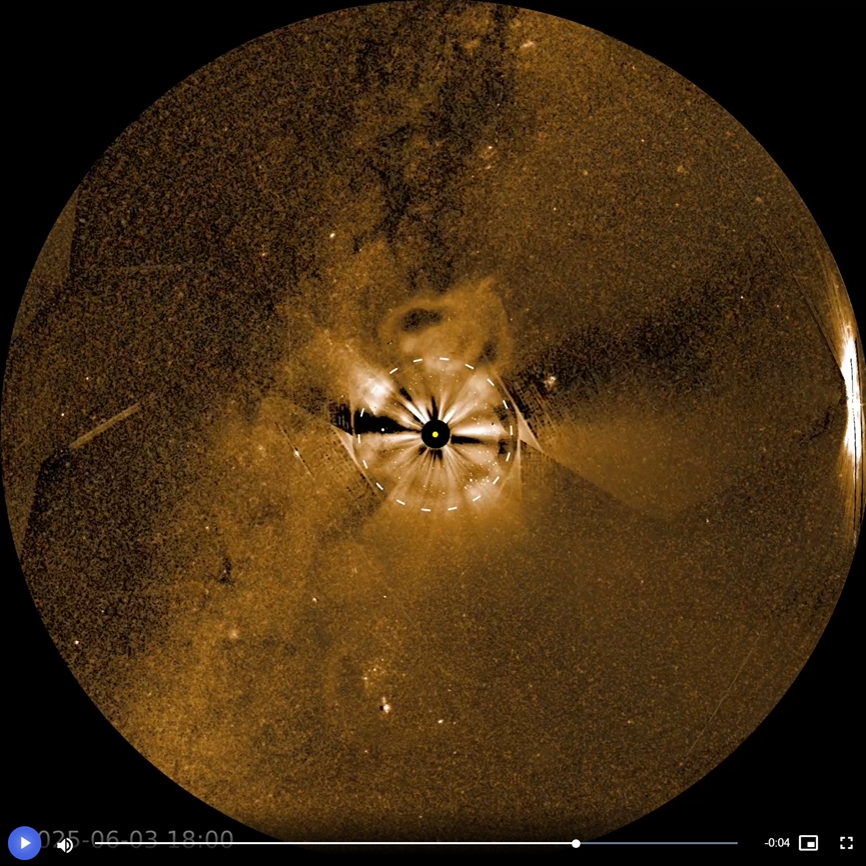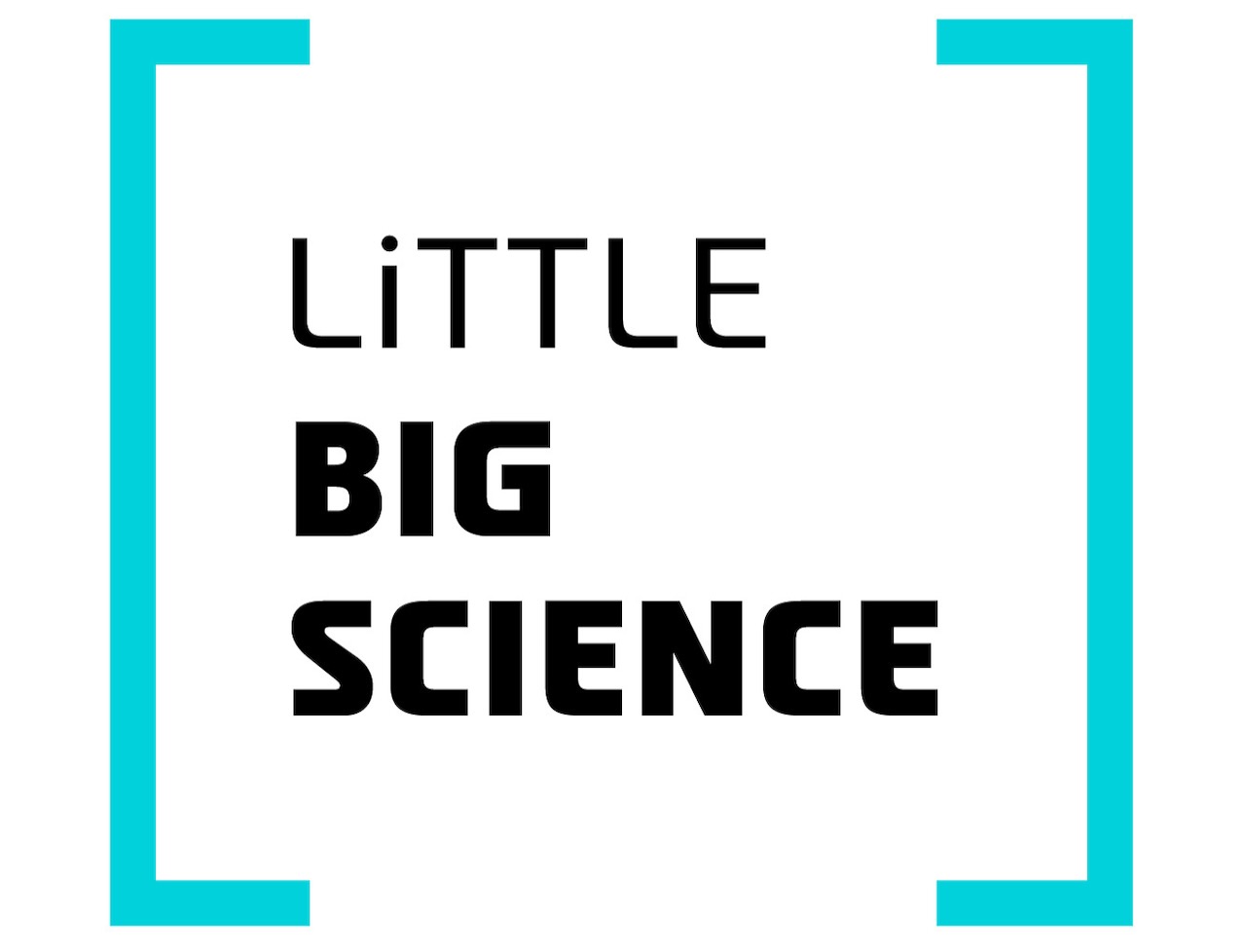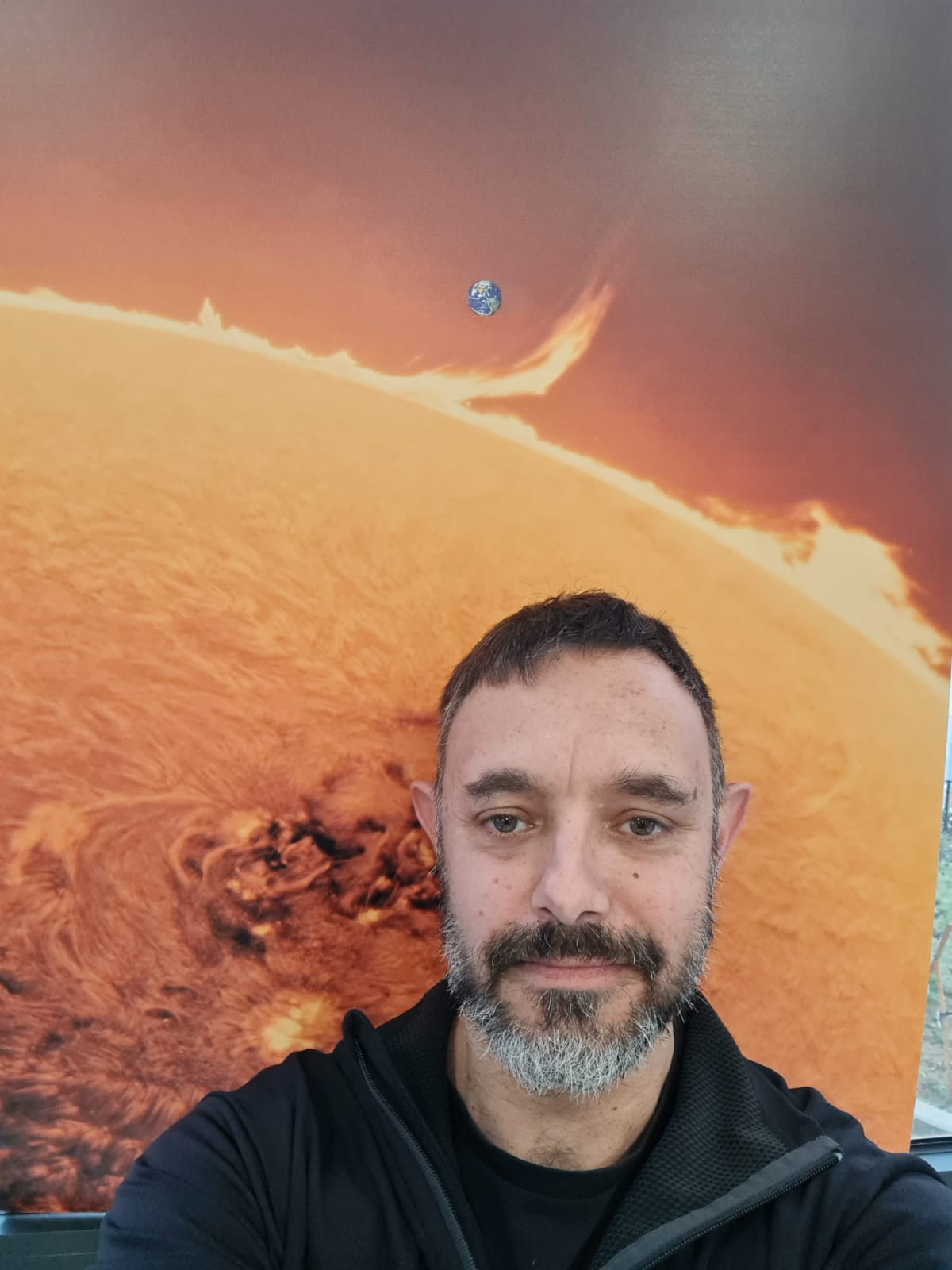
Advertisement
The PUNCH mission is designed to investigate the Sun’s corona (its outer atmosphere) and the inner heliosphere, which consists of the solar wind and its particles that spread throughout the solar system.
The mission consists of four satellites the size of suitcases. One satellite has a narrow field of view, while the other three observe the Sun at a 45-degree angle. This configuration provides a three-dimensional view of the corona and the material ejected from it into space. The mission will help us to understand how the Sun’s atmosphere becomes the solar wind, how structures form within it, and the effect of these phenomena have on the solar system.
The video shows a composite image created using data from the four instruments. Filmed between 29 May and 5 June, it captures a massive eruption blasting from the Sun and spreading across the solar system.

This frame from the video shows a coronal mass ejection (CME) in the upper part of the Sun. Particles can be seen rising through the solar atmosphere, marking the transition from the corona to interplanetary space. Note that the Sun itself is hidden from the camera’s view to prevent sensor saturation. Sensor saturation from the Sun, would prevent us from observing the corona and heliosphere.
PUNCH will provide essential data for space weather forecasting and help to predict extreme events. Solar flares that trigger CMEs can affect Earth in various ways, such as intensified auroras and communication disruptions. Earth's magnetic field protects it from charged particles emitted from the Sun. However, at high intensity, CMEs can seriously damage satellites and power grids. Crewed space stations, both ISS and the Chinese space station, as well as the Hubble Space Telescope, can also be affected. The James Webb Space Telescope may be severely impacted because it is not shielded by the Earth's magnetic field.
Hebrew editing: Smadar Raban
English editing: Gloria Volohonsky
References:







